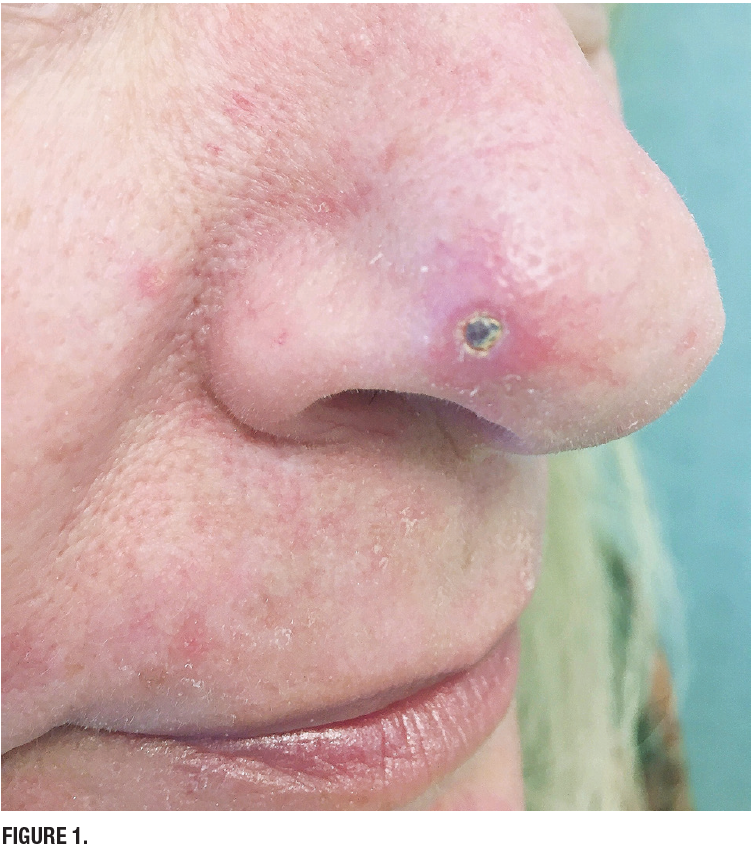Discussion
The most striking thing to consider is the prominent facial eschar. The differential diagnosis of a cutaneous eschar, while extensive, can be rapidly narrowed. There was no history of renal or cardiovascular disease, reducing the likelihood of calciphylaxis or embolic phenomenon. The eschar could not be drug-related, as the patient was not on an anticoagulant. There was no antecedent tumor which could have undergone necrosis. She had signs and symptoms highly suggestive of an infection, and therefore many entities could be considered. These include, but are not limited to: bacterial sepsis, including ecthyma gangrenosum; fungemia; mucormycosis; tularemia; scrub typhus; plague; and anthrax. However, one must always put the potential diagnostic possibilities into proper context. In this case, that context included a very recent trip to South Africa. Two rather obscure rickettsioses thus become reasonable to consider: African tick bite fever (due to R. africae) and South African tick bite fever (due to R. conorii). Both can cause a febrile illness and an eschar.
What would you do next?
Multiple laboratory methods can confirm tick-borne rickettsial diseases. However, specific rapid diagnostic tests are usually not available, even in the United States. An enzyme-linked immunosorbent assay for the detection of IgG class antibody directed against the “spotted fever group” rickettsia showed a positive titer. Serologic tests, cultures, and polymerase chain reaction tests, as available, were negative for all other potential infectious etiologies. In my estimation, this patient most likely had South African tick bite fever (SA-TBF). First, she was almost exclusively in urban settings, whereas African tick bite fever (ATBF) is more typically acquired following long-term exposure to a rural setting. Moreover, while she was exposed to dogs and a breeding kennel, classic sources of the vector tick for SA-TBF, she had virtually no exposure to cattle or other livestock, the characteristic hosts for the vector tick of ATBF. Her rash involved the palms and soles, areas often affected by the eruption associated with SA-TBF but not that associated with ATBF; and her illness was relatively severe, which contrasts with the more mild disorder associated with ATBF. How would you treat this patient?
Fortunately, the antibiotic doxycycline can effectively treat most human rickettsial infections, regardless of exact etiology. The patient was given doxycycline 100 mg BID. Her systemic symptoms rapidly disappeared and her eschar eventually healed with only a minimal depressed, atrophic scar.
Several key points can be gleaned from this “zebra” case. When evaluating a patient with a febrile illness of uncertain etiology in conjunction with cutaneous findings, clinicians should obtain a thorough travel history, ask about exposure to vectors such as insects and animals, and consider diseases common to the region the patient recently visited. Clinical and epidemiologic clues are critical for establishing such challenging diagnoses and support initiating appropriate anti-infective therapy based upon a presumptive diagnosis.
Suggested reading
Dunn C, Rosen T. The rash that leads to eschar formation. Clin Dermatol. 2019;37(2):99-108.
Lowery K, Rosen T. Probable African tick bite fever in the United States. Yale J Biol Med. 2020;93(1):49-54.


